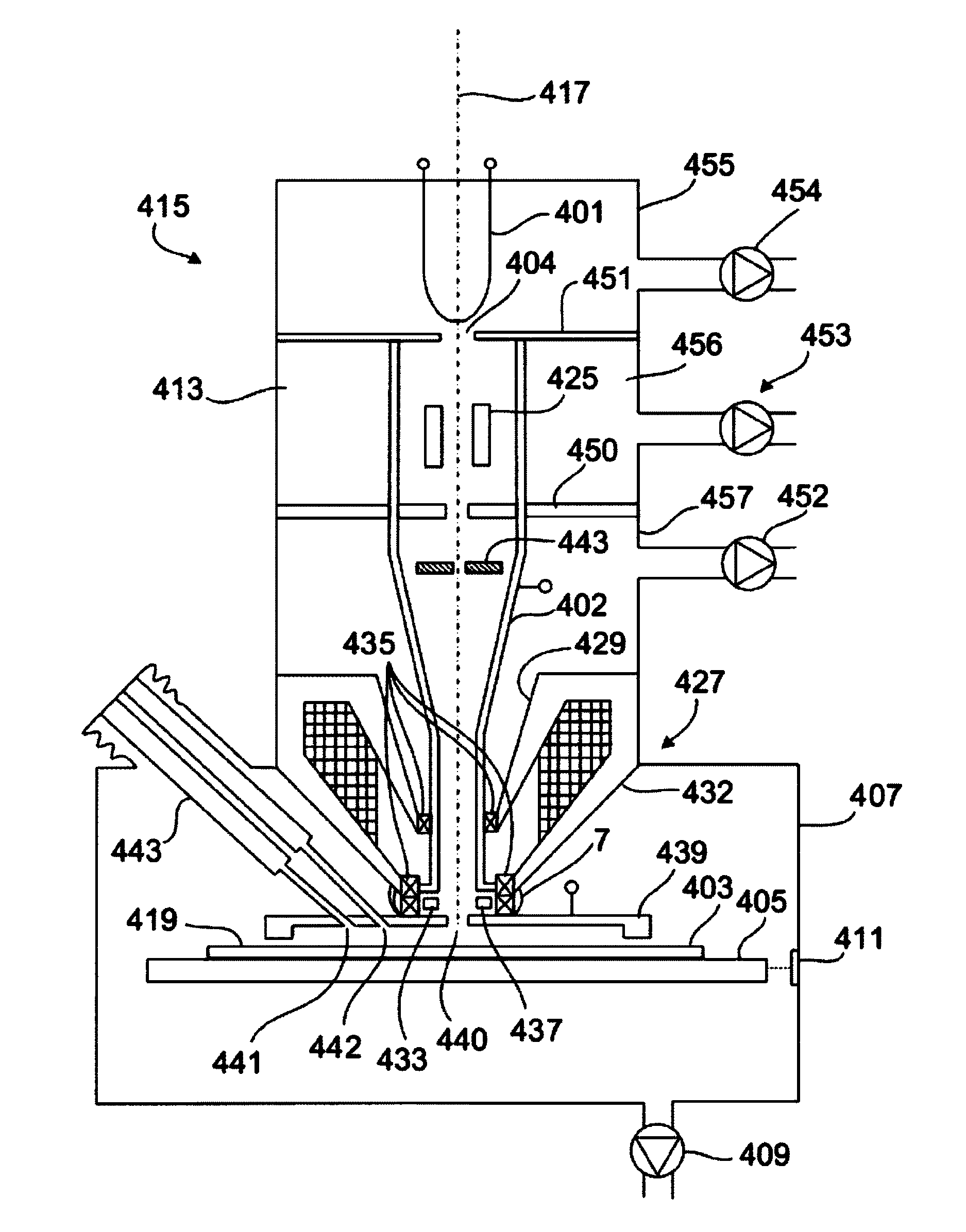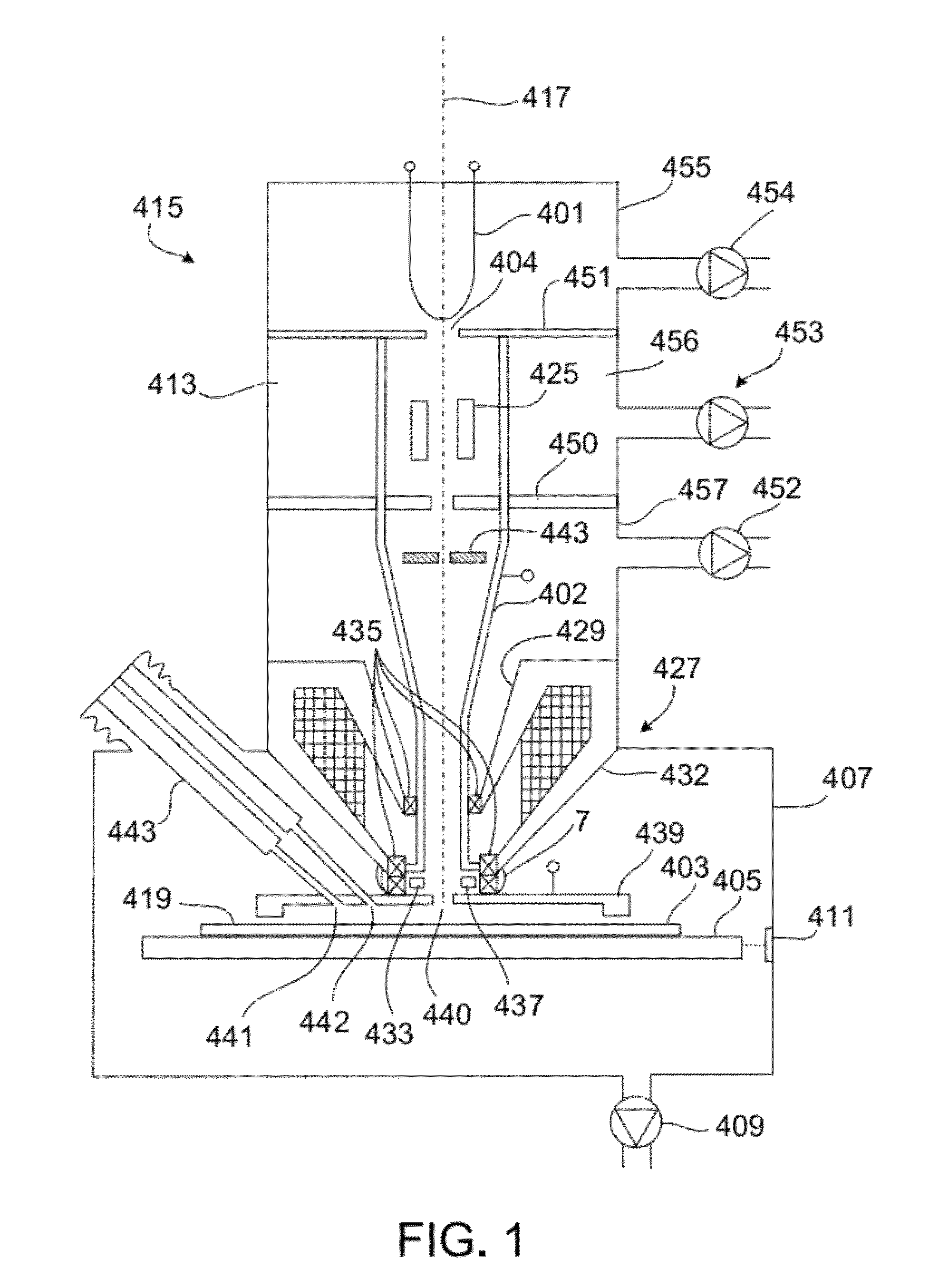Apparatus and method for investigating and/or modifying a sample
a technology of apparatus and sample, applied in the direction of tube electrostatic deflection, semiconductor/solid-state device testing/measurement, particle separator tube details, etc., can solve the problems of expensive and complicated disclosure solution, and achieve the effect of reducing the influence of charge accumulation effect and economics
- Summary
- Abstract
- Description
- Claims
- Application Information
AI Technical Summary
Benefits of technology
Problems solved by technology
Method used
Image
Examples
Embodiment Construction
[0052]In the following, presently preferred embodiments of the claimed apparatus and the claimed method are described with particular reference to a scanning electron microscope. However, it is to be understood that the present invention can be used for any apparatus, wherein electrically charged particles are used to study, image or modify a sample either on its surface or in its interior regions. A particular important field of use is the repair of masks for the semiconductor industry. In this case the scanned electron beam is used to selectively deposit or remove material, in particular a chromium layer from the surface of the mask, which is typically made out of quartz.
[0053]FIG. 1 presents a schematic vertical cross-section of an embodiment of the invention. This system is used to process a work piece 403, namely a photo mask. This photo mask serves for use in a photolithographic process and carries structures which are photographically transferred to a radiation sensitive laye...
PUM
| Property | Measurement | Unit |
|---|---|---|
| kinetic end energy | aaaaa | aaaaa |
| time | aaaaa | aaaaa |
| distance | aaaaa | aaaaa |
Abstract
Description
Claims
Application Information
 Login to View More
Login to View More - R&D
- Intellectual Property
- Life Sciences
- Materials
- Tech Scout
- Unparalleled Data Quality
- Higher Quality Content
- 60% Fewer Hallucinations
Browse by: Latest US Patents, China's latest patents, Technical Efficacy Thesaurus, Application Domain, Technology Topic, Popular Technical Reports.
© 2025 PatSnap. All rights reserved.Legal|Privacy policy|Modern Slavery Act Transparency Statement|Sitemap|About US| Contact US: help@patsnap.com



